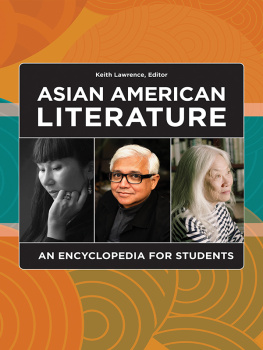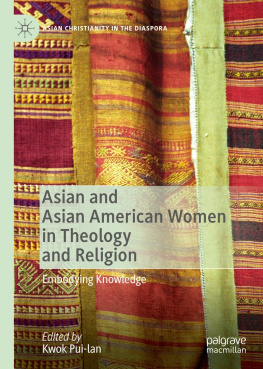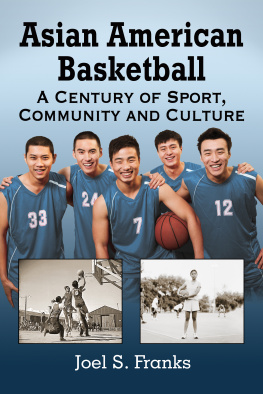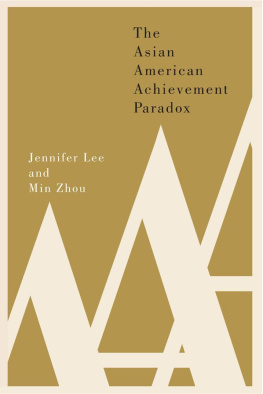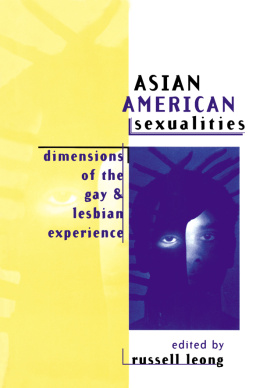Contents
Guide
Pagebreaks of the print version
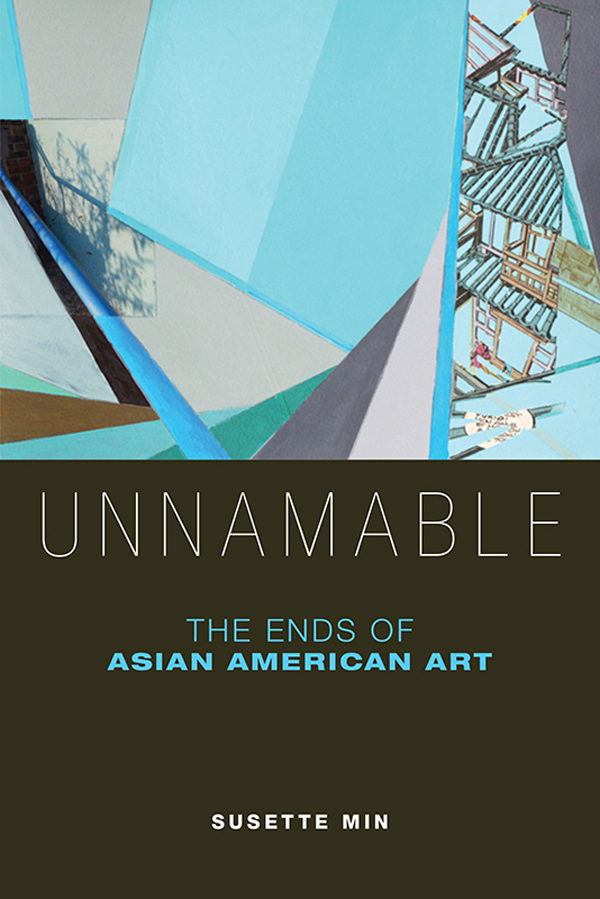
UNNAMABLE
Unnamable
The Ends of Asian American Art
Susette Min

NEW YORK UNIVERSITY PRESS
New York
NEW YORK UNIVERSITY PRESS
New York
www.nyupress.org
2018 by New York University
All rights reserved
References to Internet websites (URLs) were accurate at the time of writing. Neither the author nor New York University Press is responsible for URLs that may have expired or changed since the manuscript was prepared.
Library of Congress Cataloging-in-Publication Data
Names: Min, Susette S., author.
Title: Unnamable : the ends of Asian American art / Susette Min.
Description: New York : New York University Press, 2018. | Includes bibliographical references and index.
Identifiers: LCCN 2016047747| ISBN 9780814764299 (cl : alk. paper) | ISBN 9780814764305 (pb : alk. paper)
Subjects: LCSH : Asian American artThemes, motives. | Asian American artExhibitions. | Curatorship.
Classification: LCC N 6538. A 83 M 56 2017 | DDC 704.03/95073dc23
LC record available at https://lccn.loc.gov/2016047747
New York University Press books are printed on acid-free paper, and their binding materials are chosen for strength and durability. We strive to use environmentally responsible suppliers and materials to the greatest extent possible in publishing our books.
Manufactured in the United States of America
10 9 8 7 6 5 4 3 2 1
Also available as an ebook
CONTENTS
Introduction
Lingering Thoughts on the Last Asian American Exhibition in the Whole Entire World
Asian American art has been and sometimes is still conceived simply as art created by an artist of Asian American descent, or misperceived as Asian art, or presumed to contain some kind of Asian-looking motif, design, or symbol. Such presuppositions have led to miscategorizations, oversights, lapses, and deaccessions of works by Asian American artists at major institutions despite a long history of Asian American artistic production within the United States and transnationally. Since the nineteenth century, Asian American artists have been prolific and active in creating their art and having it displayed at major venues, including the Museum of Modern Art (MoMA) and the Whitney Museum; collaborating with internationally known artists such as Richard Diebenkorn, John Cage, Constantin Brancusi, and Damien Hirst; and teaching at prestigious universities within the United States and abroad. But due to a combination of systemic racism, racialization, and marginalization, such histories and accomplishments have been subjugated, repressed, and forgotten. In response to these negative forces, much of the scholarly and curatorial focus on Asian American art over the last two decades has revolved around either excavating, archiving, or displaying marginalized and overlooked artworks by Asian American artists. Such endeavors of making visible Asian American art have been in one sense productive. Asian American art is now on the verge of institutional legibility and legitimacy as (1) something to be collected by museums such as the Smithsonian and Asia Society and (2) a field to be engaged as more than a special topic once a year at the conference of the College Art Association.
Continuing in this trend of mainstream visibility, a set of exhibitions emerged in the first decade of the twenty-first century, an extension or reprisal of exhibitions that first emerged in the 1990s, dubbed by some as the multicultural era. While ethnic-specific exhibitions have been around since the advent of the world exhibitions in the nineteenth century, in the 1990sin correspondence with a resounding rejection of Reagans promotion of color blindness in combination with the radicalization of multiculturalism and its aims to reallocate and distribute downward the structures of power and capitalthese kinds of exhibitions became the primary vehicle for showcasing an unprecedented number of marginalized and minority artists. Merging aims to fight back against cutbacks in arts funding and other austerity measures with a broad antiracist/sexist/homophobic agenda, including the demand for access to the apparatus of representation, artists and organizations across a wide spectrum came together, creating coalitions, collectives, and alternative art spaces, as well as pressuring major art institutions to [broaden] their horizons and open their doors and collections. Museums appear more than ever to be enriching a global audience in their diverse presentation of art forms by artists from all over the world, and on a local level, broadening their outreach to communities of color through educationalnote not curatorialprogramming.
While a number of international Asian artists are currently Scene and Herd in the latest pages of Artforum , representation of artworks by Asian Americans remains incommensurate with yearly tallies of permanent collection acquisitions, critical reviews and articles in journals and magazines, exhibition programming, art survey books, dissertations, and course syllabiall barometers of a continued practice of exclusion. Against this backdrop of global pluralism and racial disparity, a resurgence of racial- and ethnic-specific exhibitions began to reemerge, beginning with Freestyle (2001), followed by One Way or Another: Asian American Art Now (2006) and Phantom Sightings: Art after the Chicano Movement (20082010) ( In contrast to the 1990s, when the reception of such exhibitions became quickly unfashionable, these exhibitions were well received, seemingly successful in negotiating the contradictory attitudes towards race and art and in making more broadly appealing artworks by Black/Chicano/Asian American artists.
The emergence of a cosmopolitan and diverse global art scene is one of the interrelated factors and material forces accounting for this shift in attitude towards such exhibitions, but the untimeliness of Asian American arts formal recognition is something that I would like to unpack here. Given the enduring history of the absence and marginalization of Asian American art in mainstream institutions, there is an understandable impulse to quickly accept this recognition in order to secure a space and place for Asian American art in perpetuity. But how does this same recognition correlate with the postracial era or the disappearance of race and racism by which, if the logic follows, categories such as Asian American art should be seen as obsolete or anachronistic and no longer relevant? Looking back at the reviews and aftermath of the exhibitions within the context of neoliberal globalizations effect on the production and reception of art in general and Asian American art and exhibitions in particular, a troubling reading emerges that threatens to fix Asian American art as a site of reconciliation and containment, a filter and point of entry for select artists to enter into the art market or an exhaustive repository that absorbs those artists who are on the threshold of fading into obscurity. The book makes a case for refusing this end and predicamenta pause before the threshold of visibility and legitimacyby recasting the categorical imperatives of Asian American art as more than a historical recovery and conservation project and by contemplating an alternative to previous approaches to Asian American art, considering it less in terms of its aspirations to be seen and more in terms of how it can forge conditions for a politics to come.




